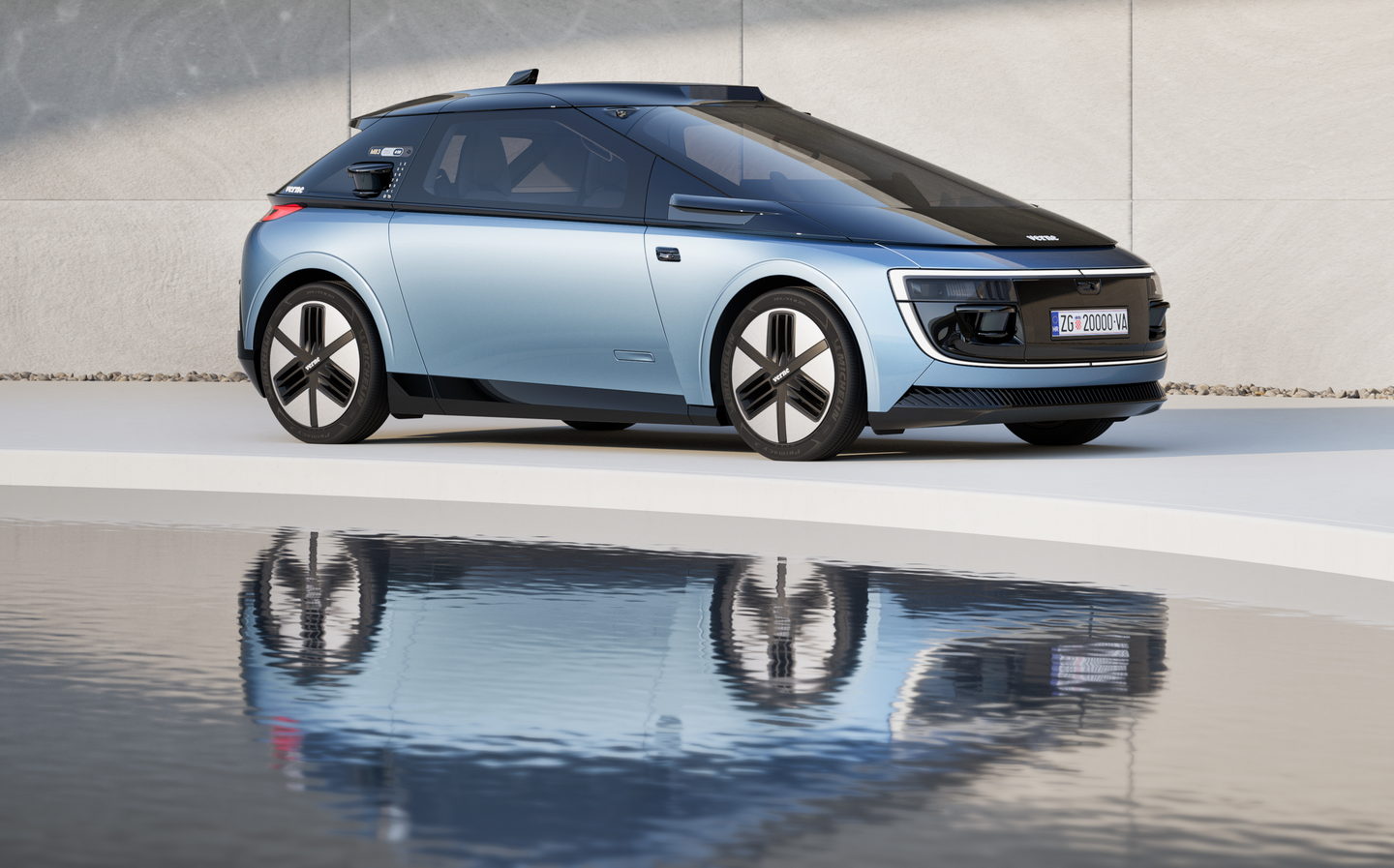Electric hypercar maker Rimac turns its hand to a two-seat autonomous taxi called Verne
Two seats in my wagon…
Looking like a conventional hatchback but with a dramatically elongated windscreen and a circular sunroof, the Rimac Verne is a new two-seat autonomous taxi which expected to enter service by 2026.
While self-driving taxis are in operation in California, the list of start-ups that have consistently failed to hit their targets when it comes to tech and provision is long. Even mighty Apple seems to have finally given up on its plans for a fully autonomous vehicle.
So, what makes the Verne different? Well, it comes from a company that has a history of over-delivering.
From hypercar to autonomous pod
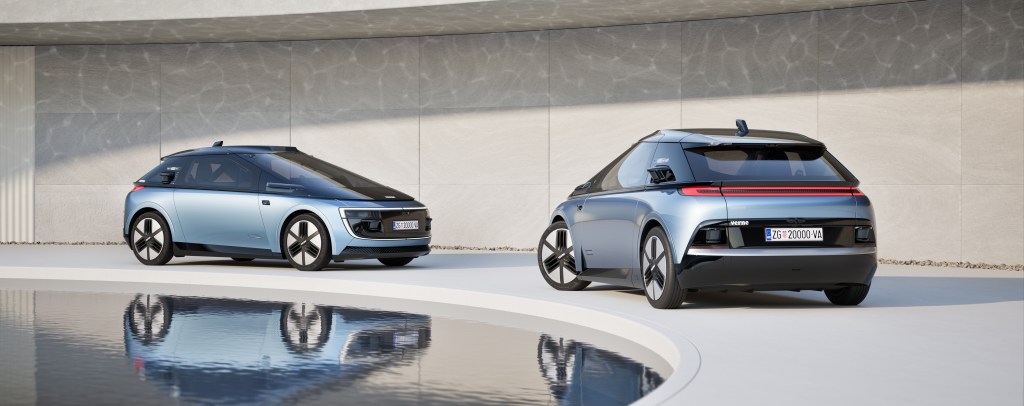
Rimac (pronounced “Rim-atz”) is the electric vehicle company formed in Zagreb, Croatia by Mate Rimac. The work of both the company and the man has been so highly regarded that not only did Porsche invest in the firm, keen to benefit from its EV expertise, but Volkswagen Group brought Mate Rimac on board to run the Bugatti brand.
Only last week, Rimac was unveiling the remarkable V16 hybrid-engined Bugatti Tourbillon, and now he’s presiding over the release of an autonomous pod. It’s quite the CV.
Just the two seats
The Verne is strictly a two-seater, a decision explained by the car’s designer (and the man who styled the dramatic Rimac Nevera hypercar) Adriano Mudri: “The data shows that nine out of ten rides are used by one or two people. Therefore, we can satisfy most of all trips with a two-seater and create unmatched interior space in a compact-sized vehicle.
“We completely redefined interior space. More space than a Rolls-Royce to relax and spend your time well. We optimised the door opening so people can just step in and sit down straight away. Sliding doors were designed not to obstruct traffic flow around the vehicle while still arriving in style.
“Once inside, passengers can stretch out their legs and get super comfortable. We wanted to make the interior less automotive and more like a living room.
“There is no typical dashboard, no steering wheel, and no pedals. But an ultra-wide 43in display that you can use. This is for entertainment but also to get information about the journey during the ride.”
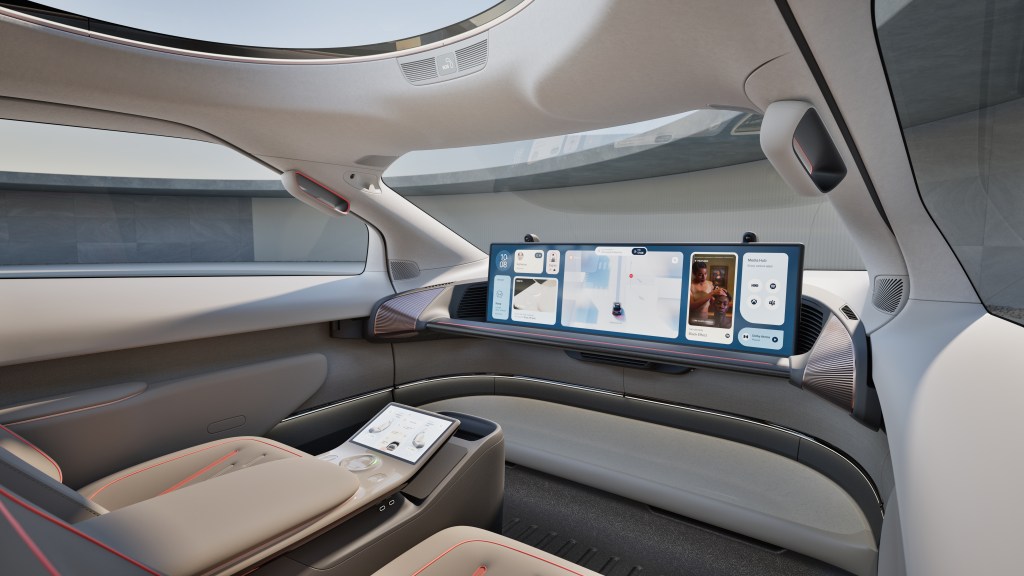
If the 43in screen isn’t enough for you, there’s also a 17in sound system. If you’d prefer to look out the windows, try looking up — there’s a circular sunroof, called the “Halo” by Rimac, and which Mudri describes as “a portal to new journeys.”
Hailed by app
As is common for regular, human-driven taxis now the idea is that the Verne can be hailed via a smartphone app. Through that app, a passenger can pre-set the cabin temperature, lighting and infotainment system so that it’s all just right when the Verne arrives, Rimac says. Even the smell inside the cabin — which has a scent sprayer — can be altered.

Between the seats there’s a touchscreen controller which allows passengers to alter their destination on the fly. Critically, there’s also a physical switch — which Rimac calls “The Median” — allowing passengers to stop and restart the Verne, giving a modicum of control over the computer pilot.
On the outside, there are no rear-view mirrors, nor any windscreen wipers. They’re considered surplus to requirements for a vehicle that can sense and “see” its surroundings via a battery of sensors provided by autonomous tech expert Mobileye.
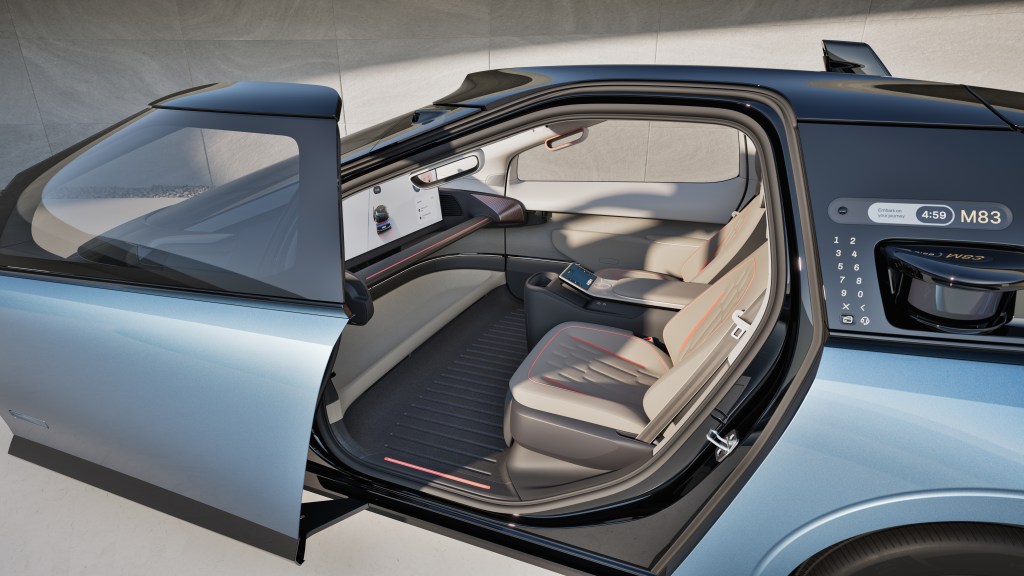
Equally, the Verne vehicle is said to be adaptable and versatile, so versions with more seats and more luggage area can be created.
Made in Croatia
The Verne service will be backed up by a “Mothership” — a location where cars can be recharged and inspected, and repaired if necessary, although Rimac says that the cabins are designed to be robust and able to cope with wear and tear.
As with the Verne vehicles themselves, the Motherships will be designed and built in Zagreb, as Rimac’s plan for the Verne is to put Croatia, and Zagreb itself, on the motoring map. A Slavic Maranello or Adriatic Stuttgart if you will.
“The location of the production facility will be in the southern part of Zagreb. Our vehicles will be assembled, calibrated and tested here. This production facility will put Croatia on the map as a country that encourages the development of key future technologies that will bring many benefits to the community,” said Verne’s CEO, Marko Pejković.
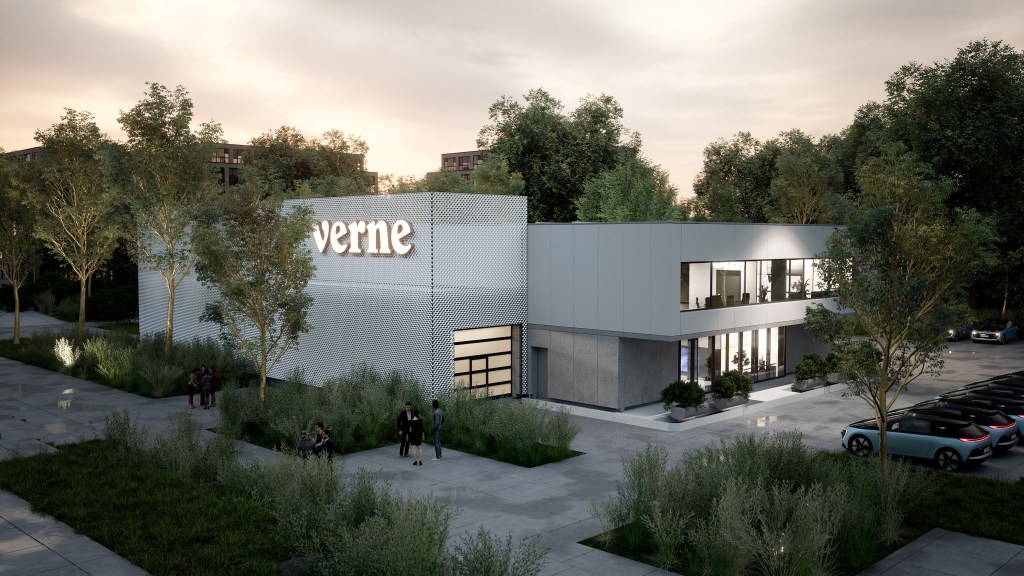
If all goes to plan, Zagreb will also be where the Verne will enter service for the first time in 2026. After that, the idea is to expand to the rest of Europe, the US and worldwide with the UK and Germany high on the list of potential markets.
Rimac reckons that widespread use of Vernes will have multiple benefits, both environmental (it is fully electric), logistically (cutting down on inner-city car use and freeing up road space) and social (improving air quality and noise pollution, and helping to link up public transport hubs).
“The end result would be the best possible mobility experience for everyone,” said Mate Rimac. “This means that every customer will have a better service than the best mobility service enjoyed by the very rich, through the service that is affordable for all.
“You will have a safe and reliable driver, a vehicle with more interior space and comfort than the best limousines today, and a service that will be tailored to your needs in every possible way.
“The service will also provide customers with much more than just transportation from point A to point B. It frees up your travel time, allowing you to think, learn, or relax. Improving your life with every trip.
“We are shifting the attention from the technology itself to its benefits. Verne will transform travel time into a chance for personal growth, discovery and enjoyment. In essence, enriching lives in every journey you take.”
Related articles
- If you found news of the new Verne autonomous taxi interesting, you might want to read our review of the Rimac Nevera
- Have you read about the robotaxis on trial in Shanghai?
- Read about the British start-up planning 200 flying taxi hubs globally
Latest articles
- Denza Z9GT 2025 review: Flawed but sleek 1,062bhp shooting brake from BYD’s luxury arm
- Extended test: 2024 Renault Scenic E-Tech review
- Best-selling cars 2025: The UK’s ten most popular models of the year so far
- Audi A6 Avant 2025 review: Trusty executive estate ticks expected boxes, and there’s still a diesel option
- Keir Starmer eases pressure on carmakers to sell EVs in response to ‘global economic headwinds’
- F1 2025 calendar and race reports: The new Formula One season as it happens
- Ferrari 12Cilindri Spider review: Heady blend of traditional and futuristic becomes even more intoxicating after lid is removed
- Skoda reveals its fastest accelerating production car yet: the electric Elroq vRS
- Carmakers fined £461m in UK and Europe for not competing over vehicle recycling


